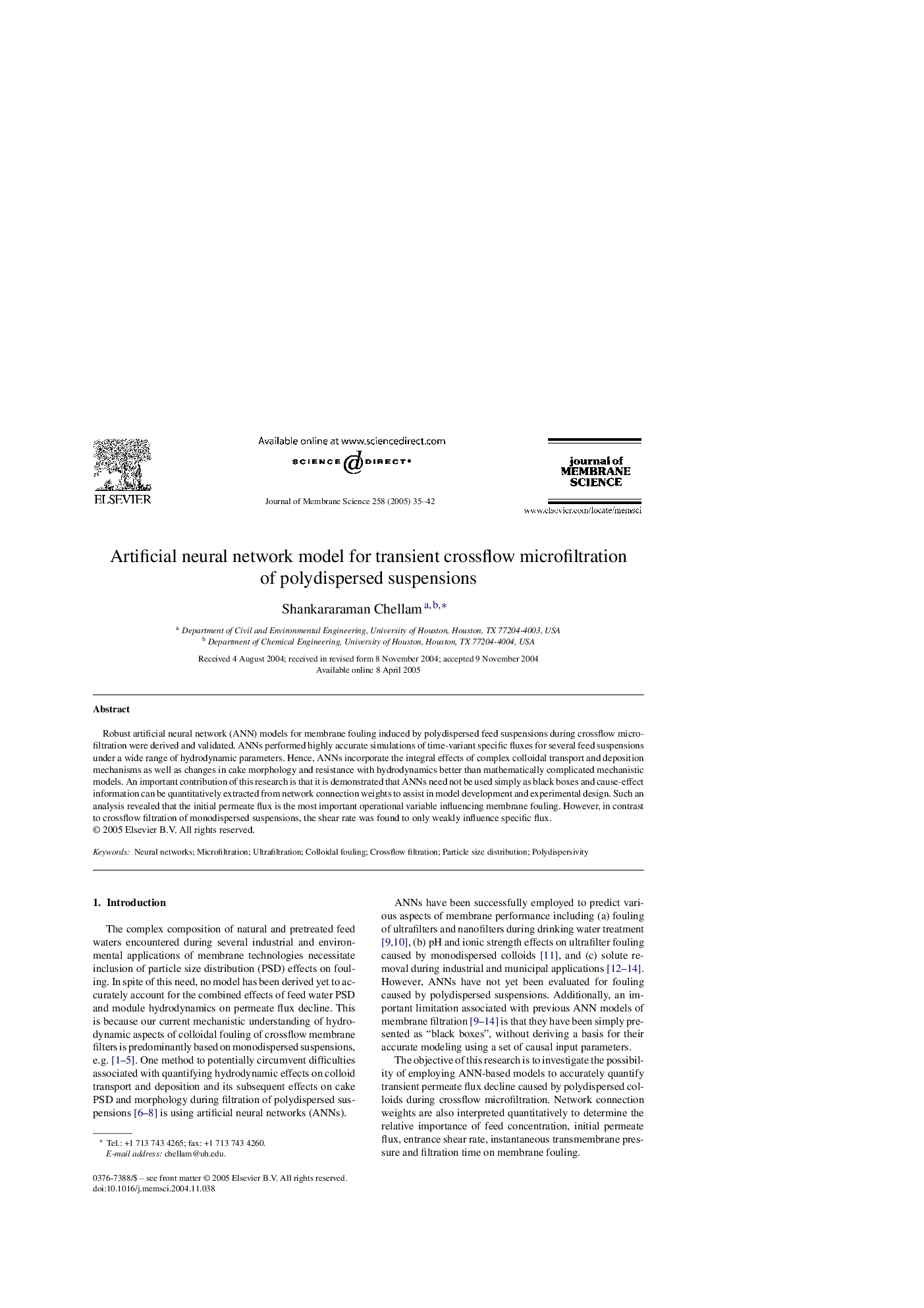| Article ID | Journal | Published Year | Pages | File Type |
|---|---|---|---|---|
| 9684756 | Journal of Membrane Science | 2005 | 8 Pages |
Abstract
Robust artificial neural network (ANN) models for membrane fouling induced by polydispersed feed suspensions during crossflow microfiltration were derived and validated. ANNs performed highly accurate simulations of time-variant specific fluxes for several feed suspensions under a wide range of hydrodynamic parameters. Hence, ANNs incorporate the integral effects of complex colloidal transport and deposition mechanisms as well as changes in cake morphology and resistance with hydrodynamics better than mathematically complicated mechanistic models. An important contribution of this research is that it is demonstrated that ANNs need not be used simply as black boxes and cause-effect information can be quantitatively extracted from network connection weights to assist in model development and experimental design. Such an analysis revealed that the initial permeate flux is the most important operational variable influencing membrane fouling. However, in contrast to crossflow filtration of monodispersed suspensions, the shear rate was found to only weakly influence specific flux.
Keywords
Related Topics
Physical Sciences and Engineering
Chemical Engineering
Filtration and Separation
Authors
Shankararaman Chellam,
